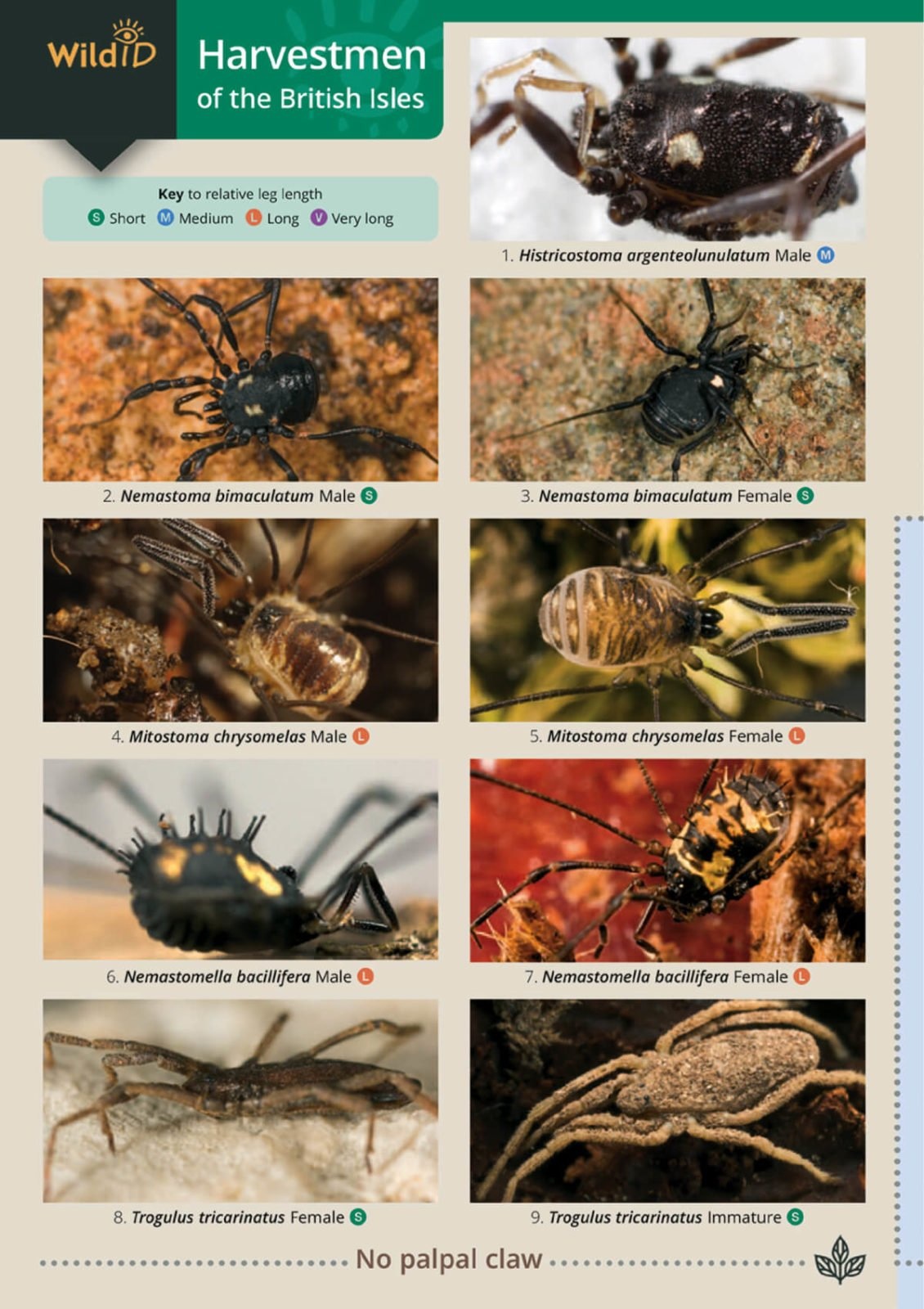


Harvestmen of the British Isles
- Including 9% Tax: $5.93
- Excluding VAT: $5.44
- Free shipping in the Netherlands from €50,-*
- Ordered before 5 p.m. on working days? Shipped the same day!
- 14-day money back guarantee
- We are happy to think along!









| Author | Paul Richards |
| Language | English |
| ISBN | 9781908819666 |
| Publisher | Field Studies Council Publications |
| Pages | 12 |
| Format | Foldable map |
| Images | Colour images and line drawings |
| Year published | 2022 |
Harvestmen are spider-like invertebrates common in late summer and autumn. 34 species have been recorded in the wild in Britain and Ireland (July 2022). New species continue to arrive, with 6 species new to the list since 2010.
This is the 2nd edition of the FSC’s fold-out guide to harvestmen, replacing the 1st edition from 2010. It is fully up to date, and covers the entire British and Irish list. Like the first edition, there are photographs of each species, with separate photos for males and females where there is significant variation. On the reverse side there is a comprehensive identification table, including the unique characteristics which immediately set species apart from each other. The author includes concise guidance on the important body features you need to examine.
Harvestmen are arachnids, and belong to the order Opiliones. The group is easy to recognise. Like spiders they are invertebrates with 8 legs, often very long compared to their small round bodies. But unlike spiders the fore and hind parts of the body are fused into one unit. Many species possess a prominent raised eye turret. Other startling characters, like crowns of spines and three-pronged tridents, can make some species very easy to recognise.
Of course harvestmen are slightly more challenging to identify than, say, the commoner butterflies and ladybirds. But many species show very distinctive and diagnostic characters in the field. So with a little effort, you should be able to find at several different species within a suburban garden. And then by widening your search within your local area, to hedgerows, woodlands and damp grasslands, you will be able to find many more. Look under stones and logs or in the ground layer of grassland. Beating or sweeping low vegetation, shrubs and trees will reveal the species that climb. Pitfall trapping, sieving and funnel extraction will pick up some of the others.
There are no reviews written yet about this product..
Complete your order